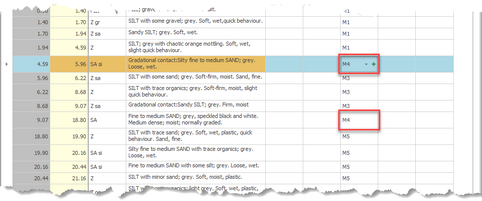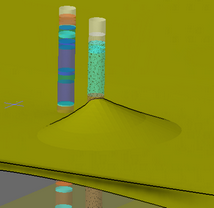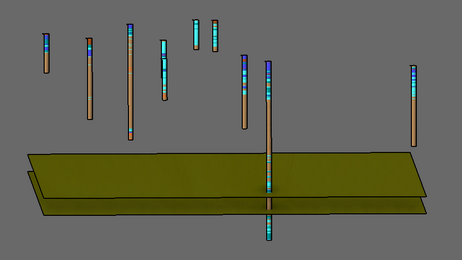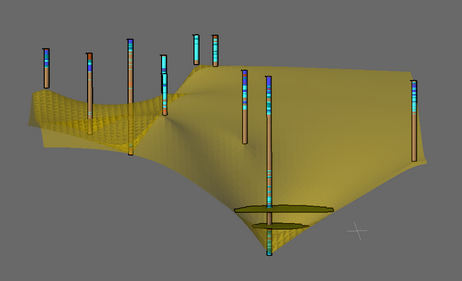Before proceeding, its important to understand the way CORE-GS processes material assignments and the how the surface generation method works.
Material Assignments
When database layers are refreshed, auto surfaces are generated based on materials assigned to records in the Geology table.
Surfaces are generated using either the top or base depth found for a given material, as defined in the Auto Surface control.
Only one value for each material can exist on a give hole, essentially meaning that a material assignments in a hole must be continuous to ensure that the correct depths are returned.
If the material assignments are discontinuous, the wrong values are returned, the result often being that surfaces pass through one another when they should not.
If another layer is inserted into an existing group, the material above or below the inserted layer must be assigned to a new material.
Similarly, if a structural change (i.e. vertical faulting) exists, it is necessary to subdivide a material horizontally to generate realistic surfaces.
Surfacing Method
Kriging (algorithm) is used to generate gridded surfaces.
All data associated to a given material (both inside and outside the data limit) is used when determining a surfaces geometry.
Irrespective of the number of data points the surface will be extend to the data limit.
This means that a surface defined by a single data point will extend to the data limit, likely providing an erroneous interpretation.
In the case that a surface is essentially unconstrained, or passes through another, surface limits need to be applied.



